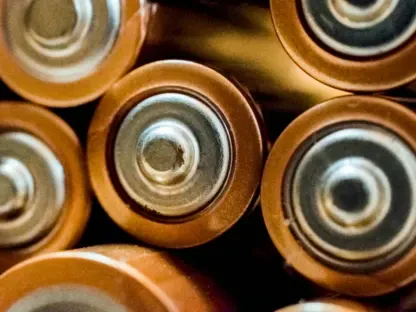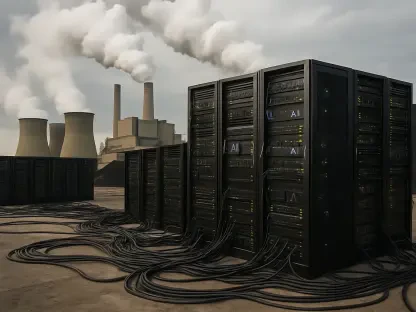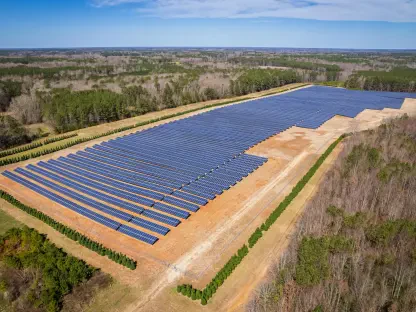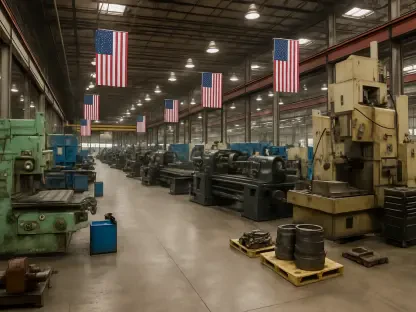Antibiotic pollution has emerged as a silent yet devastating threat to global ecosystems and public health, with residues like sulfamethoxazole lingering in water and soil, driving the dangerous rise of antibiotic resistance. This growing crisis demands innovative solutions that can effectively degrade these contaminants without introducing further harm to the environment. Traditional remediation techniques, often dependent on harsh chemicals, not only fail to address the root issue but also create secondary pollution and escalate costs. A groundbreaking development in environmental technology, however, offers a glimmer of hope. The introduction of self-heating catalysts, specifically an iron-carbon (Fe/C) composite, could redefine how antibiotic pollution is tackled. Developed through a cutting-edge method known as flash Joule heating, this catalyst promises an energy-efficient, eco-friendly approach to breaking down pollutants, potentially transforming the landscape of environmental cleanup.
Unpacking the Breakthrough Technology
Exploring the Flash Joule Heating Method
The core of this revolutionary catalyst lies in flash Joule heating, a technique that redefines efficiency in material synthesis. This method involves delivering high-voltage energy to heat materials to temperatures nearing 4,000 Kelvin in mere milliseconds, creating Fe/C composites with exceptional properties. Unlike conventional synthesis processes that drag on for hours or days, consuming vast amounts of energy, this ultrafast approach slashes production time dramatically. Such efficiency not only reduces operational costs but also positions the technology as a viable option for large-scale manufacturing. The ability to craft highly active catalysts in a fraction of the usual time signals a significant shift in how environmental solutions can be developed and deployed, addressing urgent pollution challenges with speed and precision.
Beyond its time-saving benefits, flash Joule heating offers a level of control over catalyst properties that traditional methods struggle to achieve. By adjusting parameters like voltage input, researchers can fine-tune the structural and chemical characteristics of the Fe/C composite, enhancing its ability to activate molecular oxygen for pollutant degradation. This adaptability ensures that the catalyst can be optimized for specific contaminants or environmental conditions. The energy efficiency of the process also aligns with global sustainability goals, minimizing the carbon footprint of production. As industries and governments seek greener technologies to combat pollution, this rapid synthesis method stands out as a promising tool, capable of scaling up to meet widespread remediation needs without compromising on environmental responsibility.
Decoding the Catalyst’s Unique Composition
At the heart of the Fe/C composite’s effectiveness is its intricate design, featuring iron in dual oxidation states—metallic Fe⁰ and ferrous Fe²⁺—embedded within a partially graphitized carbon matrix derived from biochar. This structure enhances electrical conductivity, a critical factor in activating ambient molecular oxygen into reactive species such as hydroxyl and superoxide radicals. These radicals play a pivotal role in oxidizing and breaking down antibiotic pollutants into harmless byproducts. The carbon matrix also provides a protective framework, ensuring chemical stability and preventing common issues like aggregation or leaching of iron nanoparticles. Such durability translates to consistent performance over multiple cycles, making the catalyst a reliable option for long-term environmental applications.
Further distinguishing this technology is its eco-friendly foundation, rooted in the use of biochar as a carbon source. This not only reduces reliance on synthetic materials but also adds a layer of sustainability to the catalyst’s production. The dual-state iron configuration amplifies the catalyst’s oxidative power, enabling it to tackle stubborn contaminants like sulfamethoxazole with remarkable efficiency. Laboratory tests have demonstrated that up to 94.6% of this antibiotic can be removed within just four hours, showcasing the catalyst’s potential for real-world impact. The structural integrity provided by the carbon matrix ensures that the catalyst withstands environmental stresses, from varying pH levels to complex soil matrices, paving the way for versatile deployment in diverse remediation scenarios.
Assessing Environmental Benefits and Future Potential
Sustainability as a Core Advantage
One of the most compelling aspects of the Fe/C composite catalyst is its alignment with sustainable environmental practices, achieved by harnessing naturally abundant molecular oxygen for degradation processes. Traditional remediation often depends on chemical oxidants like hydrogen peroxide, which introduce secondary pollutants and inflate costs. In contrast, this catalyst eliminates the need for such additives, significantly reducing both the environmental footprint and operational expenses. The use of biochar as a carbon source further enhances its green credentials, turning waste materials into a valuable component of pollution control. This approach not only addresses antibiotic contamination but also supports broader goals of resource conservation and waste reduction in environmental management.
The practical viability of this technology extends beyond sustainability to its adaptability across various conditions. Rigorous testing has shown the catalyst maintaining high performance in diverse pH ranges and complex soil environments, indicating its readiness for real-world challenges. Whether applied to contaminated waterways or agricultural lands, the Fe/C composite offers a robust solution that can scale to meet global demands. Its ability to minimize harmful byproducts during degradation ensures that cleanup efforts do not inadvertently create new ecological issues. As nations grapple with the escalating threat of antibiotic pollution, this catalyst emerges as a scalable, cost-effective tool that prioritizes both efficacy and environmental stewardship, setting a new standard for remediation technologies.
Expanding Horizons for Pollutant Remediation
Research into the Fe/C catalyst has revealed exciting possibilities for optimizing its performance through tailored synthesis conditions, such as varying voltage levels during flash Joule heating. Higher voltages have been shown to increase the concentration of reactive iron species, thereby boosting the catalyst’s efficiency in generating hydroxyl radicals—the primary agents of pollutant breakdown. These mechanistic insights provide a blueprint for enhancing the technology, allowing scientists to adapt it for a wider array of contaminants, including pesticides and industrial chemicals. Such flexibility underscores the potential of this innovation to address not just antibiotic pollution but a spectrum of environmental hazards, broadening its impact across multiple sectors.
Looking ahead, the focus of ongoing studies is to refine this catalyst for field-scale applications, ensuring it can handle the complexities of real-world environments. The stability and longevity of the Fe/C composite, thanks to its protective carbon matrix, offer confidence in its durability over extended use. Spectroscopic analyses have confirmed the dominant role of hydroxyl radicals in degradation, with superoxide radicals providing supplementary support, guiding future design improvements. As environmental science pushes toward greener, more efficient solutions, this technology stands poised to revolutionize remediation practices. The groundwork laid by these findings suggests a future where tailored catalysts could tackle diverse pollutants, safeguarding critical resources like water and soil for generations to come.









